
How to Use terminal block 3: Examples, Pinouts, and Specs
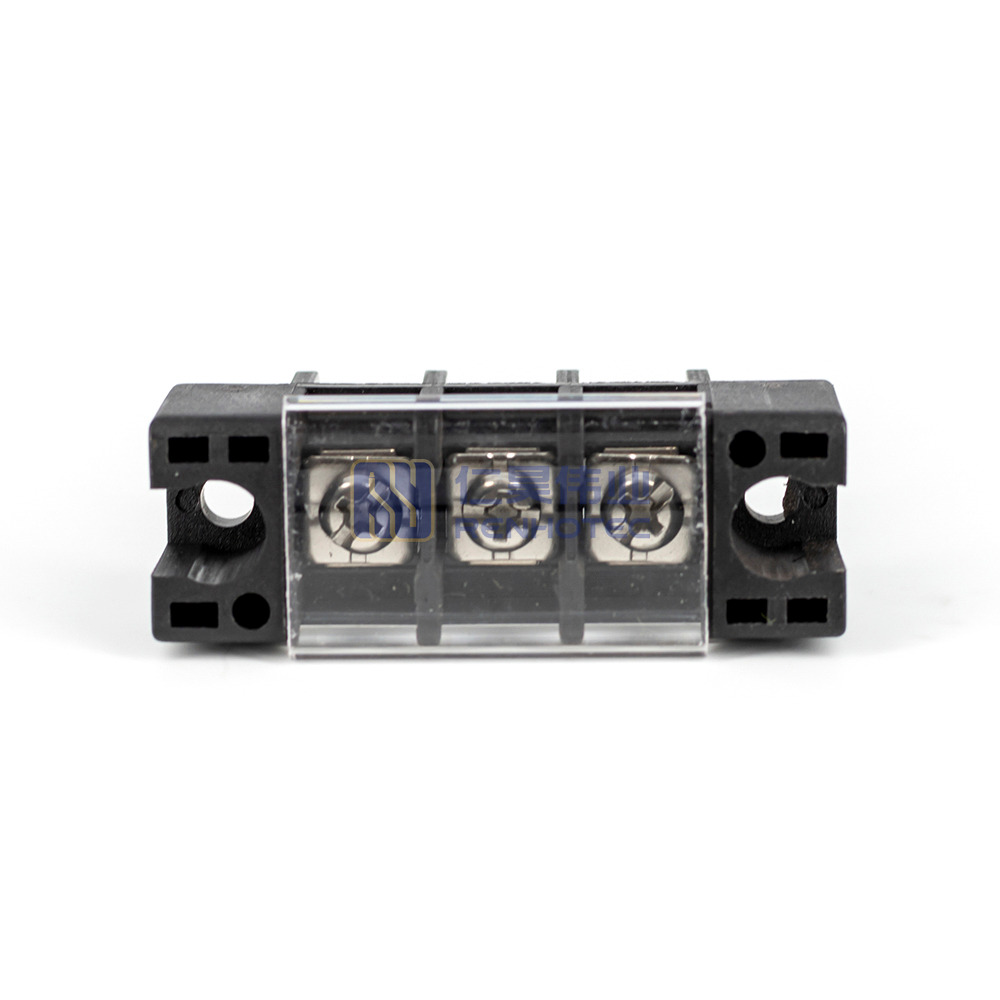
 Design with terminal block 3 in Cirkit Designer
Design with terminal block 3 in Cirkit DesignerIntroduction
A Terminal Block 3 is an electrical connector that simplifies the process of connecting multiple circuits together. It is designed to consolidate wiring in a secure and organized manner, making it an essential component in various electrical systems. Common applications include industrial control panels, HVAC systems, power supply units, and any scenario where a reliable wire-to-wire or wire-to-device connection is required.
Explore Projects Built with terminal block 3
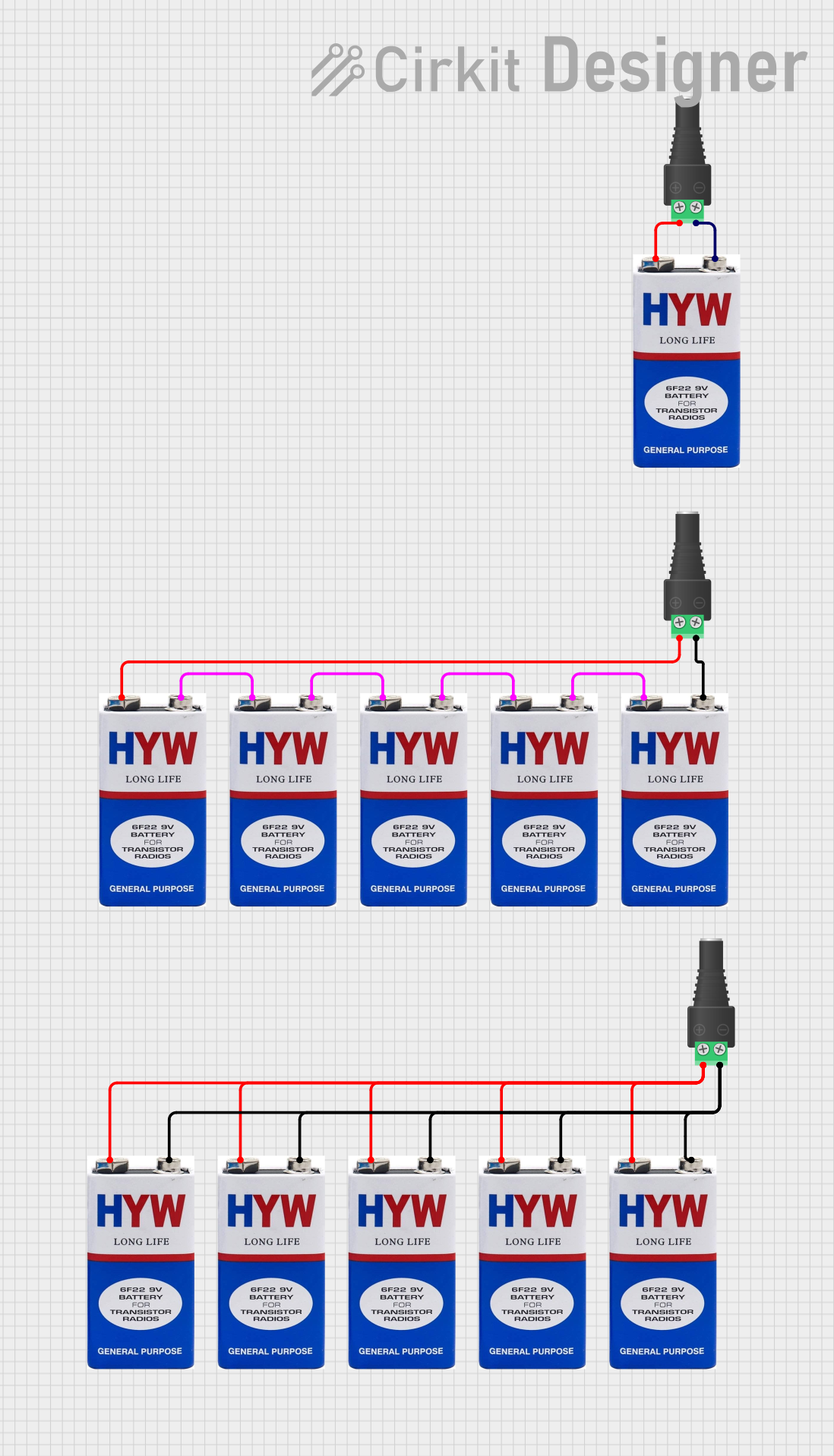
 Open Project in Cirkit Designer
Open Project in Cirkit Designer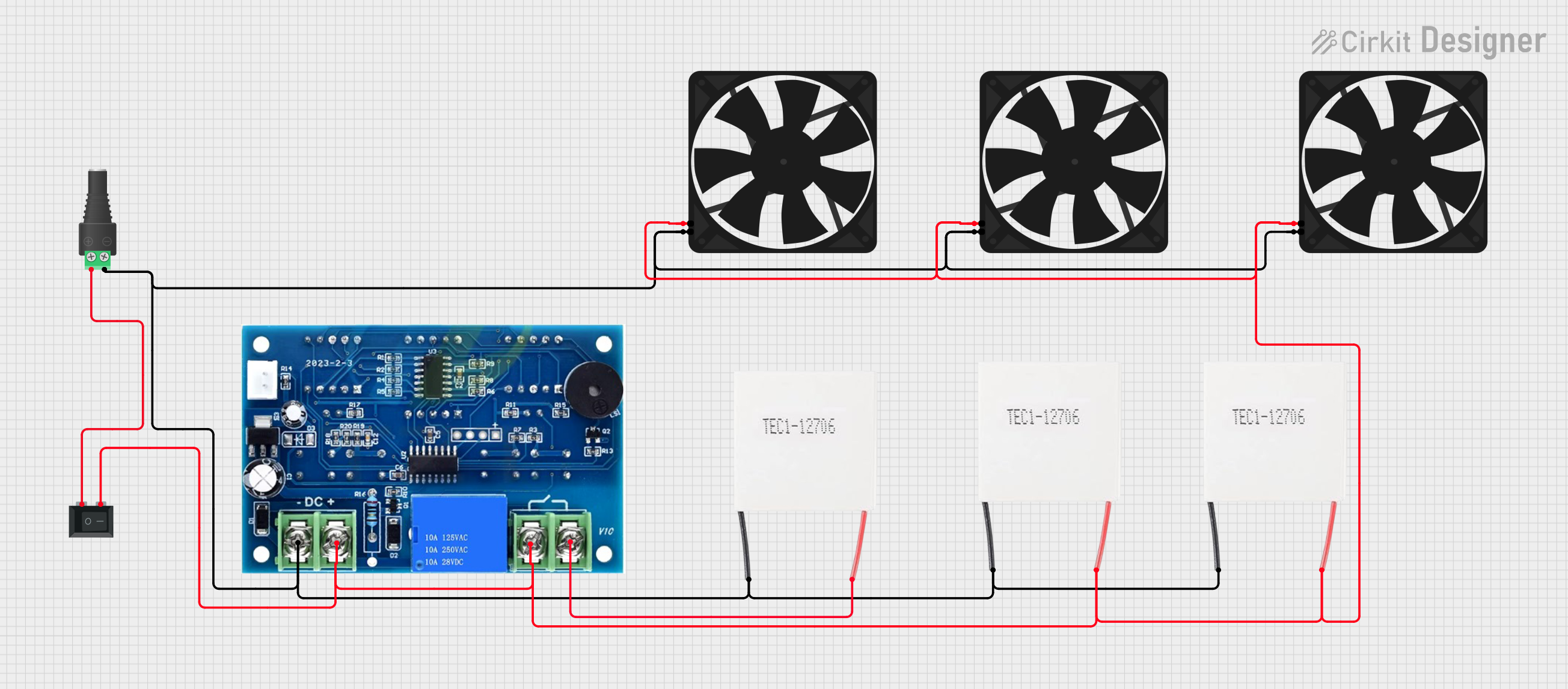
 Open Project in Cirkit Designer
Open Project in Cirkit Designer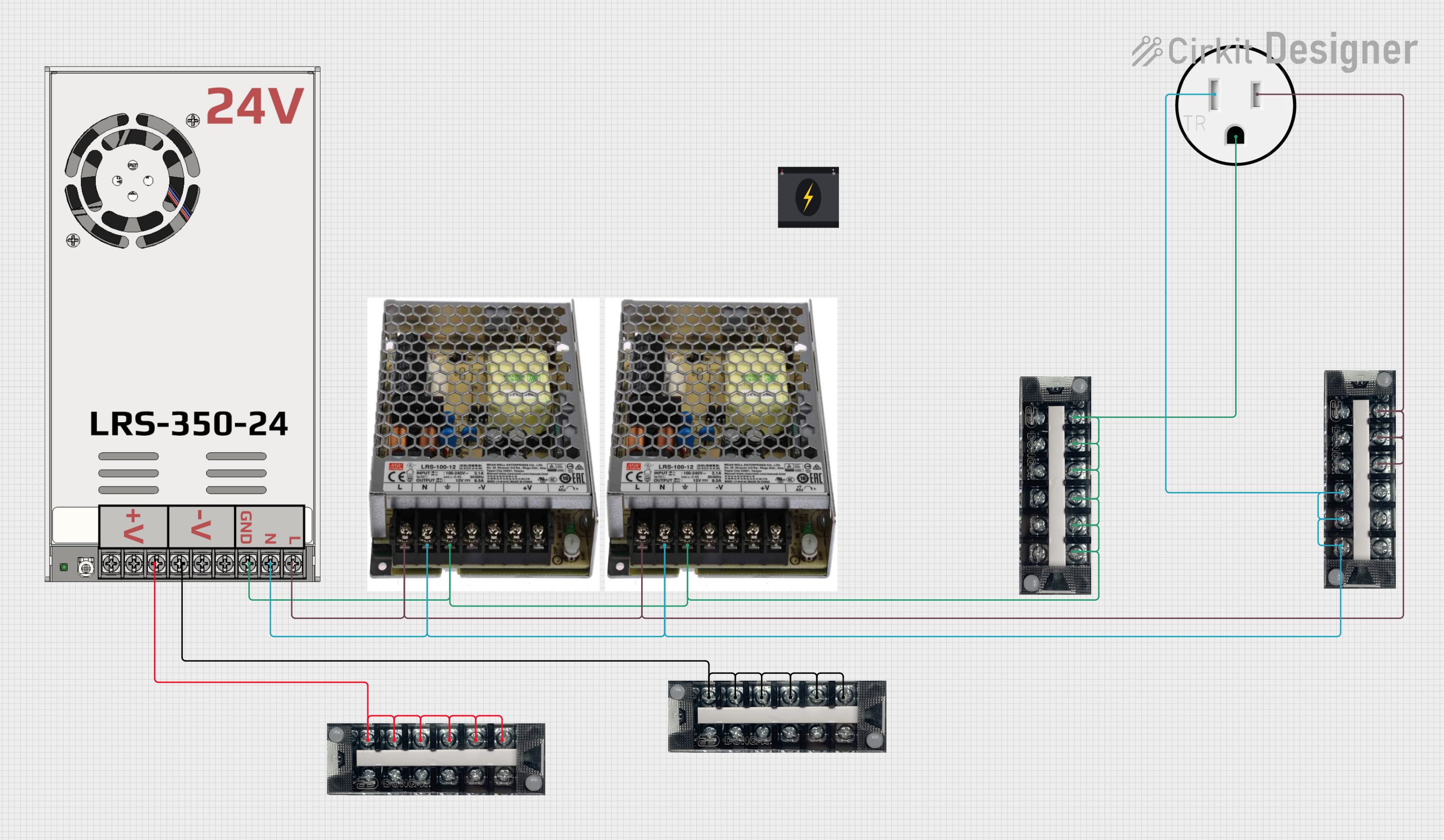
 Open Project in Cirkit Designer
Open Project in Cirkit Designer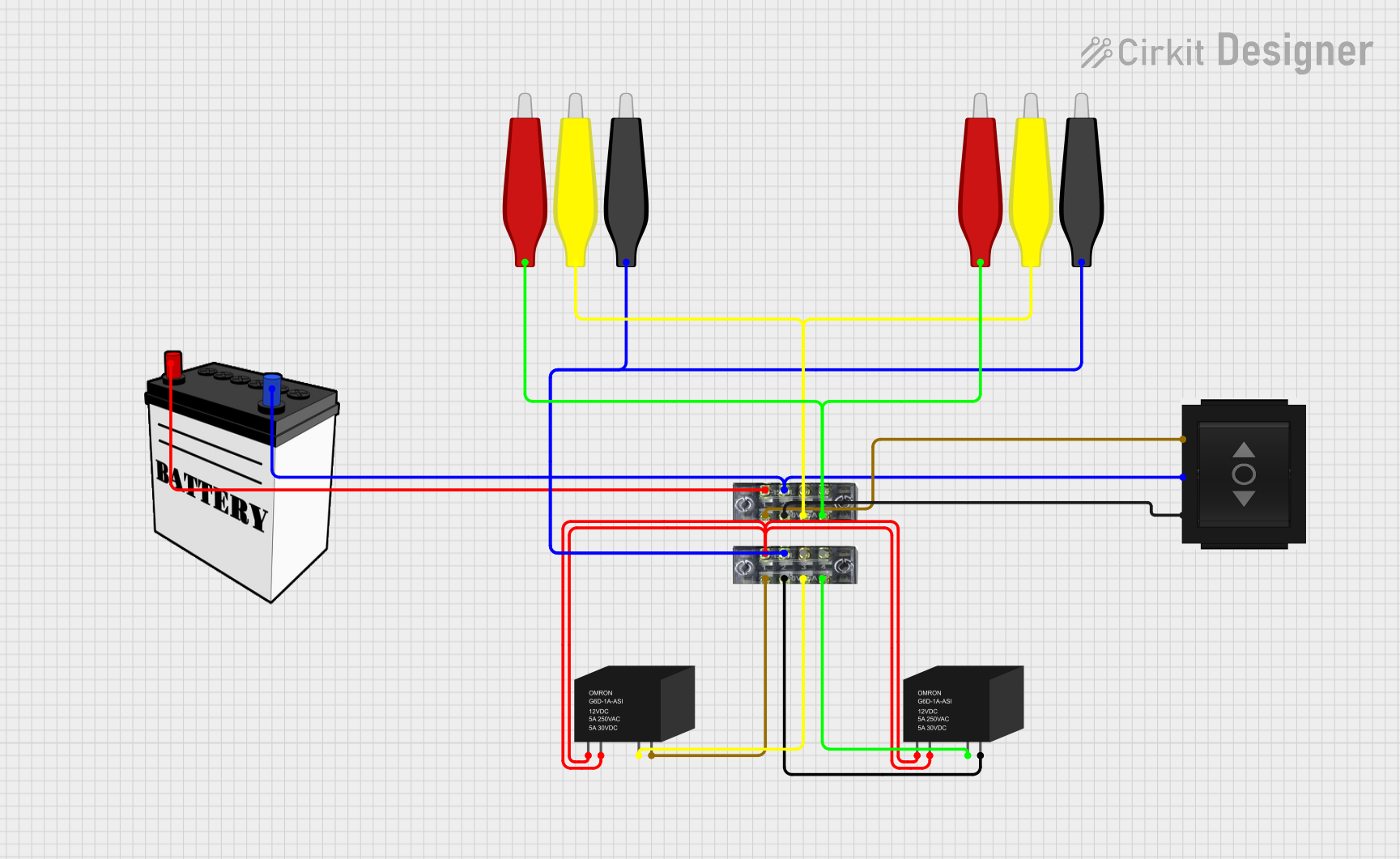
 Open Project in Cirkit Designer
Open Project in Cirkit DesignerExplore Projects Built with terminal block 3

 Open Project in Cirkit Designer
Open Project in Cirkit Designer
 Open Project in Cirkit Designer
Open Project in Cirkit Designer
 Open Project in Cirkit Designer
Open Project in Cirkit Designer
 Open Project in Cirkit Designer
Open Project in Cirkit DesignerTechnical Specifications
General Specifications
- Type: Screw-type terminal block
- Number of Positions: 3
- Pitch: Typically 5mm to 10mm (varies by model)
- Wire Gauge Range: 26-12 AWG (varies by model)
- Rated Voltage: Up to 600V (varies by model)
- Rated Current: Up to 15A (varies by model)
- Operating Temperature Range: -40°C to +105°C (varies by model)
- Material: Polyamide (PA66), flame-retardant to UL94V-0
- Terminal Screw: Steel, Zinc plated with a corrosion-resistant finish
Pin Configuration and Descriptions
| Pin Number | Description |
|---|---|
| 1 | Input/Output Terminal 1 |
| 2 | Input/Output Terminal 2 |
| 3 | Input/Output Terminal 3 |
Note: The pin numbers correspond to the terminal positions on the block.
Usage Instructions
Wiring the Terminal Block
- Strip the Wires: Remove approximately 5-7mm of insulation from the end of each wire to be connected.
- Loosen the Screws: Use a suitable screwdriver to loosen the terminal screws.
- Insert the Wires: Insert each stripped wire end into the corresponding terminal hole.
- Tighten the Screws: Secure the wires by tightening the terminal screws. Ensure a firm connection without over-tightening, which could damage the wire.
Best Practices
- Wire Selection: Use wires that match the terminal block's wire gauge range for optimal connection and safety.
- Torque Specification: Adhere to the manufacturer's torque specifications when tightening terminal screws.
- Regular Inspection: Periodically check the terminal block for loose connections and signs of wear or damage.
- Proper Labeling: Clearly label each wire and terminal to facilitate troubleshooting and maintenance.
Troubleshooting and FAQs
Common Issues and Solutions
- Loose Connections: If a connection is intermittent or fails, check that the terminal screws are properly tightened.
- Overheating: Overheating can occur due to over-tightening, under-tightening, or using an incorrect wire gauge. Ensure proper installation and wire selection.
- Corrosion: Protect terminal blocks from moisture and use corrosion-resistant models in harsh environments.
FAQs
Q: Can I use a Terminal Block 3 with an Arduino UNO? A: Yes, a Terminal Block 3 can be used to organize and connect multiple sensors or components to an Arduino UNO.
Q: What is the maximum wire size I can use with a Terminal Block 3? A: The maximum wire size depends on the specific model of the terminal block. Refer to the technical specifications for the wire gauge range.
Q: How do I know if my terminal block is properly installed? A: A properly installed terminal block will have all wires securely fastened without any signs of damage or overheating.
Example Arduino UNO Connection Code
// Define the Arduino pin connected to the terminal block
const int terminalPin = 2;
void setup() {
// Set the terminal block pin as an output
pinMode(terminalPin, OUTPUT);
}
void loop() {
// Send a HIGH signal to the terminal block
digitalWrite(terminalPin, HIGH);
delay(1000); // Wait for 1 second
// Send a LOW signal to the terminal block
digitalWrite(terminalPin, LOW);
delay(1000); // Wait for 1 second
}
Note: The above code is a simple example of toggling an output connected to a Terminal Block 3. The actual application will vary based on the connected components and the desired functionality.